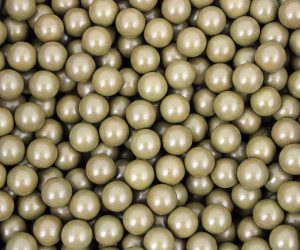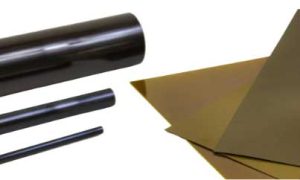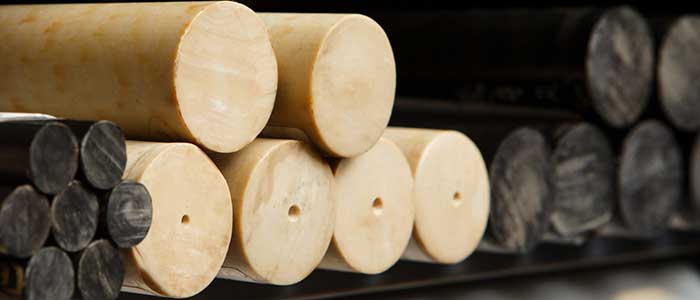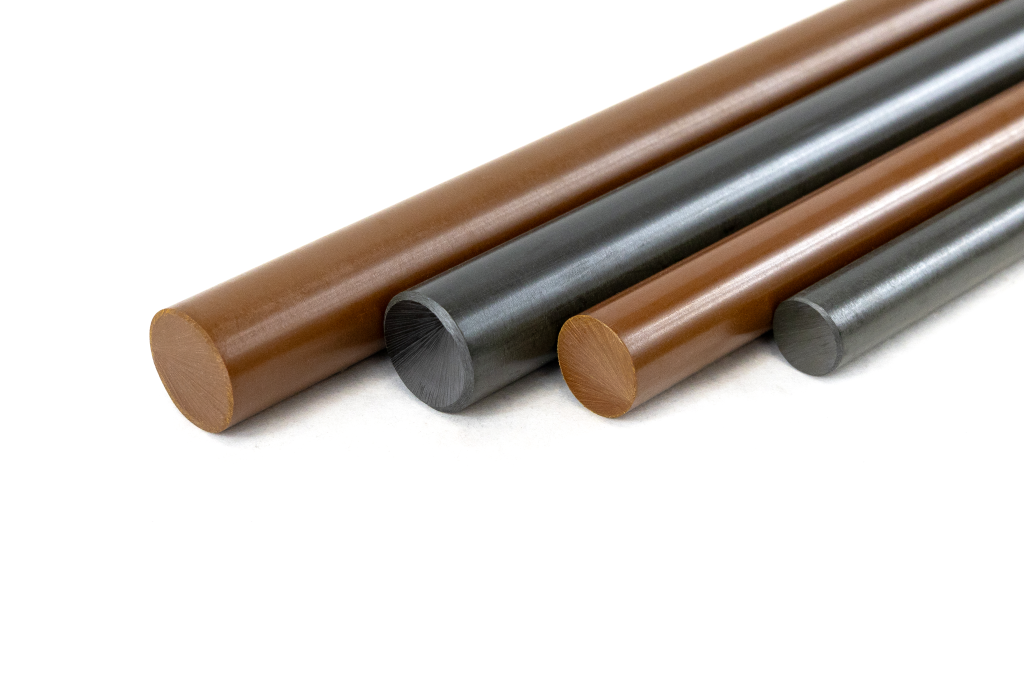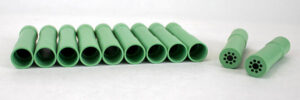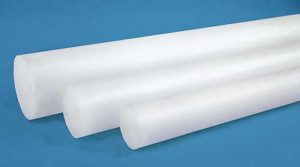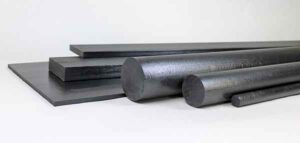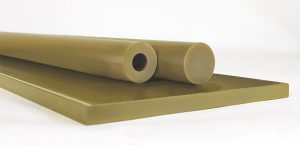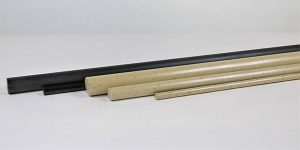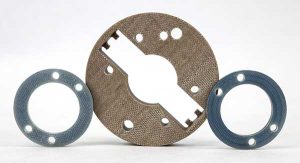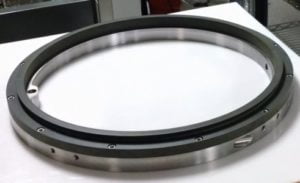Polyaryletherketone (PAEK) Overview
The chemical designation polyaryletherketone (PAEK) applies to a family of polymers with any number of aryl, ether and ketone building blocks in their structure. Solvay has commercialized a version as AvaSpire PAEK. All references to PAEK throughout our website relate to the AvaSpire grades. Considered to be a hybrid of PEEK (polyetheretherketone), PAEK has an aryl (A) linkage in its molecular structure that gives the polymer high modulus, thermal stability and flame retardant properties.
The properties of PAEK fall between PEEK and other ultra high-performance thermoplastics such as PEI (polyetherimide) and PAI (polyamide imide). For example, PAEK’s glass-transition temperature (Tg) of 316°F (158°C) is somewhat higher than that of PEEK, but significantly below the Tg of PAI at 537°F (280°C).
Because it retains stiffness over 300°F (150°C) and has good all-around mechanical properties, PAEK can be alternative to PEEK for certain applications, depending on the stress load and the chemical environment. It can also be an economical option to PEEK for applications that require high quantities of specific parts or stock shape sizes.
PAEK Resin Grades
Solvay produces and supplies PAEK in several families of grades under its AvaSpire® PAEK trade name. Unreinforced grades vary somewhat in melt flow characteristics to meet the requirements of different melt processes and applications. On thermal performance the unreinforced grades have a similar Tg of 316°F (158°C) and exhibit comparable levels of mechanical properties and dimensional stability. Wear-resistant formulations are also available. Glass and carbon fiber-reinforced PAEK formulations have also been developed for applications that require higher strength and rigidity than that of the unfilled versions of the thermoplastic material.
Both unfilled and fiber-reinforced grades are available for melt processing by extrusion and injection molding, An unreinforced grade with melt characteristics suitable for extruding film and thin tubing is also available within the AvaSpire PAEK resins family.
A notable feature of PAEK resins is their colorability. This is an advantage for appearance parts where material selection criteria include aesthetics and strength retention up to the high-performance plastic’s thermal performance limits. Among typical PAEK applications in this category are medical and dental instrument handles, and housings and components for electrical devices.
PAEK Stock Shapes for Machining
Drake Plastics produces stock shapes from various PAEK formulations and supplies them with the designation of the AvaSpire grade from which they are produced. Specific grades include AvaSpire 621 NT PAEK, an unreinforced natural material with FDA compliance and good impact resistance. AvaSpire 621 GF30 PAEK offers higher mechanical strength based on its 30% glass fiber reinforcement. It is also FDA compliant. Adding to the portfolio of Drake’s high-strength PAEK stock shapes for machining is AvaSpire 621 CF30, a 30% carbon fiber-reinforced grade. In addition to its mechanical properties and FDA compliance, AvaSpire 621 CF30 PAEK also exhibits improved wear resistance over the unfilled and glass-reinforced AvaSpire formulations.
Drake supplies several sizes of AvaSpire PAEK stock shapes from inventory and extrudes other configurations on request. Capabilities also include CNC-machining precision components from our AvaSpire PAEK stock shapes, and injection molding parts in AvaSpire PAEK grades as specified by Drake’s customers.
PAEK Performance Characteristics
PAEK offers good all-around properties and is often compared to other polyetherketone polymers in evaluating materials for an application.
For example, Solvay’s AvaSpire PAEK bears similarities in several areas of performance to PEEK, an ultra high-performance thermoplastic supplied by both Solvay and Victrex PLC. There are also notable differences. The upper thermal limits for strength retention are somewhat higher for PAEK, while PEEK offers greater resistance to wear and fatigue. Also, while PAEK has very good environmental resistance, PEEK withstands a broader range of chemicals. The following performance summary highlights some key similarities and differences:
Strength over 150ºC
Its hybrid polyketone polymer structure with the aryl linkage affords PAEK a higher level of stiffness in the 300°F (150°C) temperature range compared to PEEK. This is evident in the Tg (glass-transition temperature) or softening point of each material, with PAEK measuring 316°F (158°C) compared to PEEK at 302°F (150°C). Its strength retention in this temperature range is the key attribute where PAEK has a performance edge over PEEK.
Mechanical properties
While PEEK exhibits higher performance on factors such as structural strength and stiffness, PAEK is recognized as having good balance of overall mechanical properties. For example, unreinforced PAEK’s flexural modulus measures an impressive 450,000 psi (3100 MPa), though somewhat less than that of PEEK at 537,000 psi (3700 MPa). Flexural strength shows a similar percentage difference in PEEK’s favor. Both PEEK and PAEK show no break on unnotched impact tests, but PAEK’s notched impact strength measures approximately 10% higher than PEEK in comparable tests.
FDA compliance
Regardless of the additives in the formulation, all grades of PAEK as supplied under the AvaSpire brand are FDA compliant. This feature and its colorability make it a good candidate for dental and medical equipment housings and instruments. PEEK also meets FDA compliance requirements for the same types of applications.
Chemical Resistance
PEEK’s unique polymeric structure is the basis of its superior chemical resistance compared to other polyetherketones, and a key reason behind its widespread use as a material for components in oil and gas and chemical processing equipment. However, all polyetherketones exhibit good resistance to many diverse chemical environments, and PAEK is no exception.
Because variables such as operating temperatures, pressures and internal stress levels in finished parts can affect the performance of any material, all applications should be tested under actual end use conditions and environments.
Electrical Properties
The electrical properties of PAEK make it a candidate for applications such as connectors, connector blocks and insulators. The dielectric strength of Solvay’s AvaSpire AV-621 NT PAEK, an unreinforced grade available in stock shapes from Drake Plastics, measures 422 V/mil (16.6 kV /mm) at 0.125” (3.2mm) thickness. Its volume resistivity is 6.2 x 1017 Ω • cm and its dielectric constant over a wide range of frequencies is 3.1.
Flame retardance
As is the case with all polyetherketone polymers, PAEK features flame retardant properties that earn it a 94 V-O rating in UL-tested thicknesses. Its flammability ratings and its electrical properties make it a contender for electrical device components, connectors and insulators.
Typical PAEK Applications
Its overall balance of properties, chemical resistance and colorability combine to make PAEK a candidate for applications such as:
- Dental and surgical instrument handles and electrical device housings that capitalize on PAEK’s colorability and its resistance to steam and other types of sterilization.
- Electrical connectors, connector blocks, electrical equipment components and housings.
- Oil and gas and chemical processing equipment valve seats, compressor valve plates, bushings, bearings, and other high temperature fluid handling components.
- Components for food and pharmaceutical processing, filling and packaging equipment that require FDA compliance and resistance to high pressure and high temperature cleaning and sanitization.

